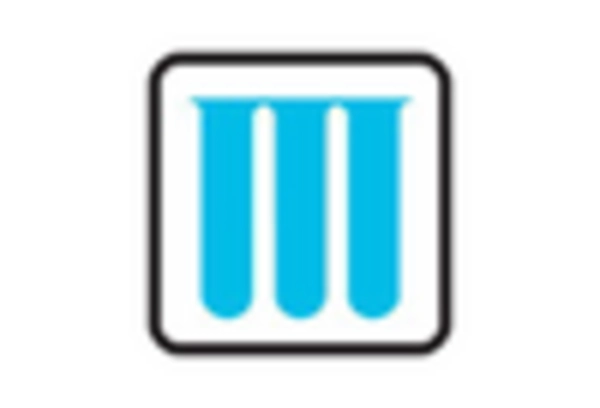Growing Cosmetic Concerns
The rising emphasis on aesthetics and personal appearance in the GCC region significantly influences the vitiligo treatment market. As societal standards of beauty evolve, individuals with vitiligo increasingly seek treatments to enhance their skin appearance. This trend is particularly pronounced among younger demographics, who are more likely to pursue cosmetic solutions. The availability of various treatment options, including makeup products designed for skin camouflage, further supports this market growth. Additionally, the influence of social media and celebrity endorsements amplifies awareness and acceptance of treatment options. The cosmetic industry is responding to this demand by developing specialized products for individuals with vitiligo, thereby creating a synergistic effect that benefits the vitiligo treatment market. This growing focus on aesthetics suggests a promising trajectory for market expansion.
Rising Healthcare Expenditure
The increasing healthcare expenditure in the GCC region is a vital driver for the vitiligo treatment market. Governments are allocating more resources to healthcare, which includes funding for dermatological conditions like vitiligo. This trend is evident as healthcare budgets expand, allowing for improved access to treatments and therapies. As patients gain better access to healthcare services, the demand for vitiligo treatments is likely to rise. Furthermore, the growing middle class in the GCC is willing to invest in healthcare, including cosmetic and dermatological treatments. This shift in spending behavior indicates a potential increase in the market size for vitiligo treatments. The combination of rising healthcare expenditure and a focus on improving patient outcomes suggests a favorable environment for the vitiligo treatment market.
Increasing Prevalence of Vitiligo
The rising incidence of vitiligo in the GCC region is a crucial driver for the vitiligo treatment market. Recent studies indicate that the prevalence of vitiligo in the Middle East is approximately 1-2 % of the population. This growing number of individuals affected by the condition necessitates effective treatment options, thereby expanding the market. As awareness increases, more patients seek medical advice, leading to a higher demand for therapies. The increasing visibility of vitiligo in society, coupled with the desire for cosmetic improvement, propels the market forward. Furthermore, the psychological impact of vitiligo on patients drives them to pursue treatment, which in turn stimulates market growth. The combination of these factors suggests a robust future for the vitiligo treatment market in the GCC.
Increased Research and Development
The commitment to research and development (R&D) in the field of dermatology is a significant driver for the vitiligo treatment market. In the GCC, there is a noticeable increase in funding directed towards understanding the pathophysiology of vitiligo and developing novel therapeutic approaches. This investment is likely to yield new treatment modalities that could revolutionize patient care. Collaborative efforts between academic institutions and pharmaceutical companies are fostering innovation, leading to the discovery of potential biomarkers and targeted therapies. As R&D progresses, the introduction of new products into the market is anticipated, which may enhance treatment options for patients. The focus on R&D not only addresses the unmet needs of patients but also positions the vitiligo treatment market for sustained growth in the coming years.
Technological Innovations in Treatment
Technological advancements play a pivotal role in shaping the vitiligo treatment market. Innovations such as targeted therapies, laser treatments, and new topical agents are emerging, enhancing treatment efficacy and patient outcomes. For instance, the introduction of narrowband UVB phototherapy has shown promising results in repigmentation, leading to increased adoption among healthcare providers. The market is also witnessing the development of combination therapies that utilize both pharmacological and non-pharmacological approaches, which may improve treatment success rates. As these technologies evolve, they are likely to attract investment and research funding, further propelling the vitiligo treatment market. The integration of digital health solutions, such as telemedicine, also facilitates patient access to treatment, thereby expanding the market reach.

















Leave a Comment